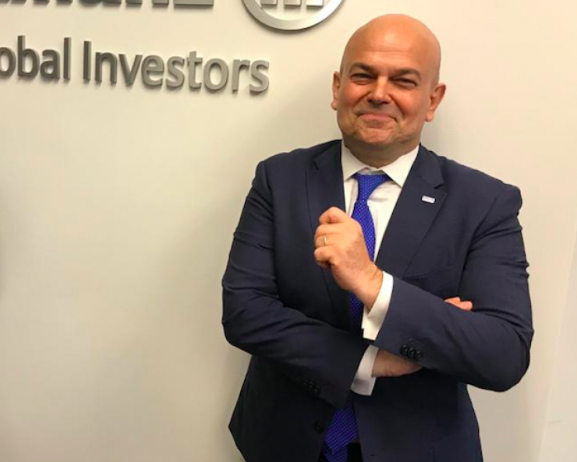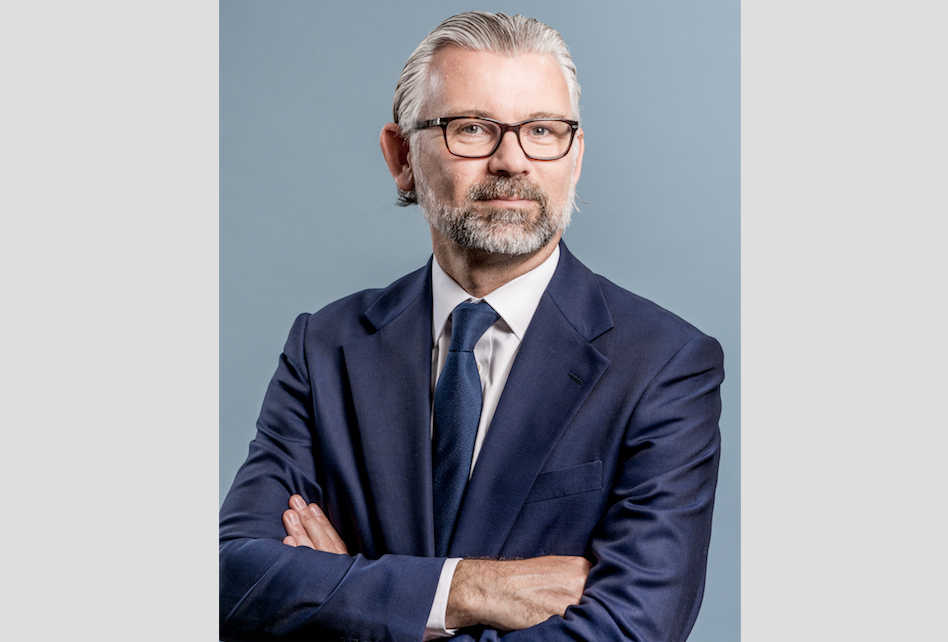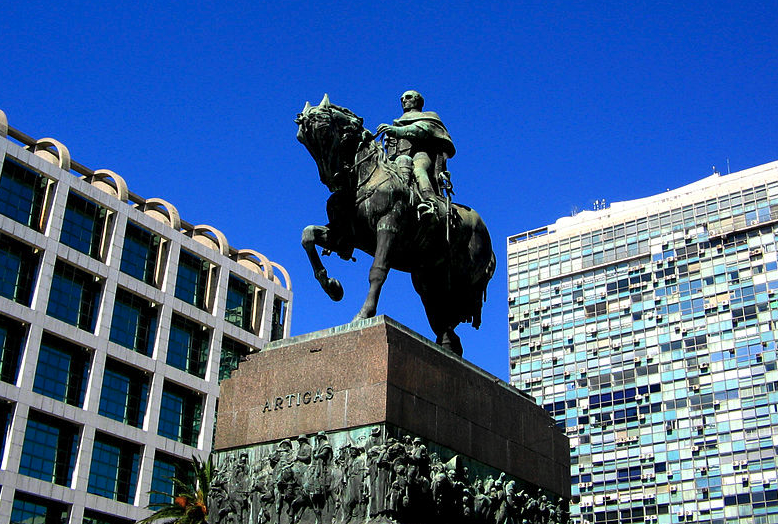Alberto D’Avenia (Allianz GI): “Para 2020, desplegaremos totalmente nuestro negocio y profundizaremos en nuestro enfoque de asesoramiento”
| Por Beatriz Zúñiga | 0 Comentarios

Alberto D’Avenia, Managing Director y Head of US Non-Resident Business (NRB) y Latam Retail en Allianz Global Investors, hace un balance positivo de 2019. Durante todo el año la principal preocupación del inversor ha sido lograr rendimientos, pero siempre preservando su capital. Un objetivo que considera han cumplido desde Allianz GIobal Investors y para el que ha sido fundamental el trabajo que hacen junto con banqueros privados y asesores financieros. Así lo ha explicado en una entrevista concedida a Funds Society.
Pregunta: Desde Allianz Global Investors, ¿cómo se ha gestionado la preocupación de los inversores por sus rendimientos?
R: Nos hemos centrado en nuestras estrategias de renta fija más tradicionales y otras soluciones de tipo income y growth para lograr sus objetivos, pero también hemos trabajado con nuestros socios en la parte de distribución para introducir soluciones de inversión orientadas a la diversificación en el espacio de inversiones alternativas líquidas. Hemos proporcionado o buscado una descorrelación, que consideramos que será útil cuando aumente la volatilidad.
P: Para 2020, ¿cuáles cree que serán los principales eventos a tener en cuenta?
R: Hay tres eventos económicos y políticos que serán clave: las elecciones estadounidenses, el desarrollo de la relaciones comerciales y la liquidez de los bancos. En un segundo plano, pero no por ello menos significativo, destacaría el petróleo, los temores respecto a la seguridad alimentaria y la creciente competencia entre Estados Unidos y China, que podría generar riesgos adicionales para las carteras. Básicamente, veremos un 2020 caracterizado por una desaceleración del crecimiento global y por la incertidumbre, y cómo la política monetaria y la política en general moverán los mercados.
Estos factores van generar movimientos de risk-on y risk-off que habrá que gestionar, sobre teniendo en cuenta que un simple tweet puede provocar cambios significativos en la volatilidad. En este entorno, los retornos beta suelen ser planos y los inversores deberían tratar de mantener sus asignaciones conforme a sus convicción y gestionar activamente el riesgo, y no simplemente evitarlo. En este sentido, el apoyo de los banqueros privados y de los asesores financieros al cliente será primordial. Desde Allianz Global Investors consideramos que es fundamental, y por eso seguimos invirtiendo de forma significativa en comunicación, por ejemplo, para trabajar temas como las finanzas conductuales, y en el asesoramiento de riesgos desde nuestra unidad especializada en ello.
P: En su opinión, ¿cómo se pueden transformar estos riesgos en oportunidades de inversión?
R: Las oportunidades de inversión en mercados con valoraciones altas serán más escasas, por eso considero que un enfoque adecuado sería buscar aquellas valoraciones más baratas pero que tengan potencial retorno bien por ingresos o por dividendos. También seguiremos buscando oportunidades en inversiones alternativas, activos como el crédito privado, en renta variable y deuda de infraestructuras, así como estrategias de retorno absoluto porque resultarán menos correlacionadas respecto a la evolución de la renta fija y la renta variable, ofreciendo una fuente adicional de diversificación. Por último, abordaremos todas las oportunidades que se presenten desde nuestro enfoque ESG. Creemos en los méritos de la sostenibilidad a largo plazo de las empresas que pueden evaluarse mejor al incorporar factores ESG en las decisiones de inversión.
P: ¿Qué cree que debería tener en cuenta el inversor de cara al próximo año?
R: Tener cierto cuidado con la inversión pasiva ya que por su naturaleza retrospectiva son vulnerables a los titulares de las noticias y al ruido. Puede ser parte de una asignación general de cartera, pero como una herramienta dentro de una estrategia que se está gestionando de forma activa y por convicción. También creo que hay que elegir cuidadosamente las acciones estadounidenses que incluimos en la cartera y mirar hacia activos que hemos estado infravalorando, como algunos nombres europeos o la deuda de mercados emergentes.
P: Durante 2019, ¿cuáles fueron los fondos más populares o demandados por los inversores?
R: Los inversores que mantuvieron un enfoque más cauteloso prefirieron fondos como Allianz Short Duration High Income y Global Selective HY, que están claramente dirigidos a la gestión del riesgo para garantizar un rendimiento sostenible en el tiempo. También han sido muy populares las inversiones temáticas porque dan acceso a ámbitos con un gran potencial de crecimiento a largo plazo, un claro ejemplo es el fondo Allianz Global Artificial Intelligence.
P: En este sentido, ¿cuál cree que será la tendencia en 2020?
R: Bueno, no creemos que las necesidades de los clientes, y por extensión de nuestros socios de distribución, vayan a cambiar radicalmente. Posiblemente, tras los buenos resultados de 2019, se siga buscando un enfoque cauteloso que permita la generación de un rendimiento atractivo. La diversificación y la gestión de los riesgos serán aún más importantes en el futuro.
P: Durante este año, ¿ha implementado Allianz GI nuevos servicios para los inversores?
R: 2019 ha sido un año crucial tras haber establecido nuestra oficina en Miami. Hemos dedicado mucho trabajo a establecer nuestra marca y presentar nuestra propuesta de valor añadido a nuestros socios, asesores financieros, consultores y banqueros privados. Hemos hecho hincapié en mostrar el gran apoyo que constituye la unidad especializada en la gestión del riesgo, además de explicar cómo hemos integrado los criterios ESG en nuestro proceso de inversión. En cuanto a las soluciones de inversión, hemos posicionado Allianz Structured Return, ya que consideramos que será clave en un contexto de volatilidad. Igualmente, hemos querido promocionar nuestras soluciones de inversión responsable, que están disponibles en las principales plataformas con las que trabajan nuestros socios, Pershing y Allfunds Bank.
P: ¿Tiene algún plan o idea para desarrollar nuevos servicios para los clientes?
R: Si 2019 ha sido el año de aterrizaje en este mercado, en 2020 desplegaremos completamente nuestro modelo de negocio. Tenemos un ambicioso plan para profundizar en nuestro enfoque de asesoramiento junto con nuestros socios, posicionar Risklab, nuestro análisis ESG y nuestras soluciones de inversión.
P: Como empresa, ¿cuáles han sido los éxitos de Allianz Global Investors en 2019?
R: Nuestro principal objetivo este año ha sido posicionar nuestra marca en los mercados de gestión patrimonial de América Latina y offshore en los Estados Unidos. En este sentido, nuestra decisión de abrir una oficina en Miami ha sido crucial para lograrlo. Hemos firmado nuevos acuerdos de distribución con socios locales independientes de Estados Unidos y América Latina, y hemos aumentado el nivel de cooperación con los que ya trabajamos.









